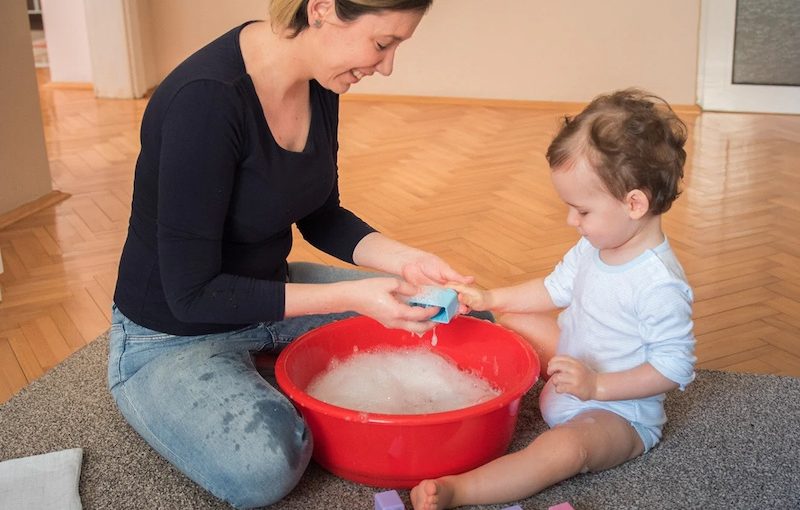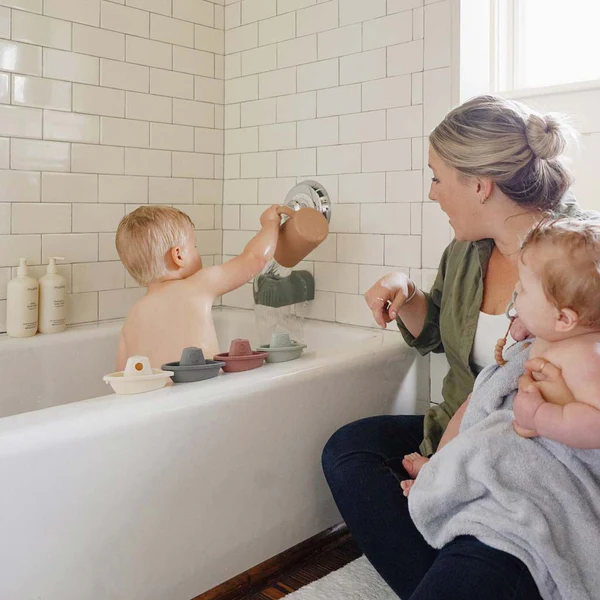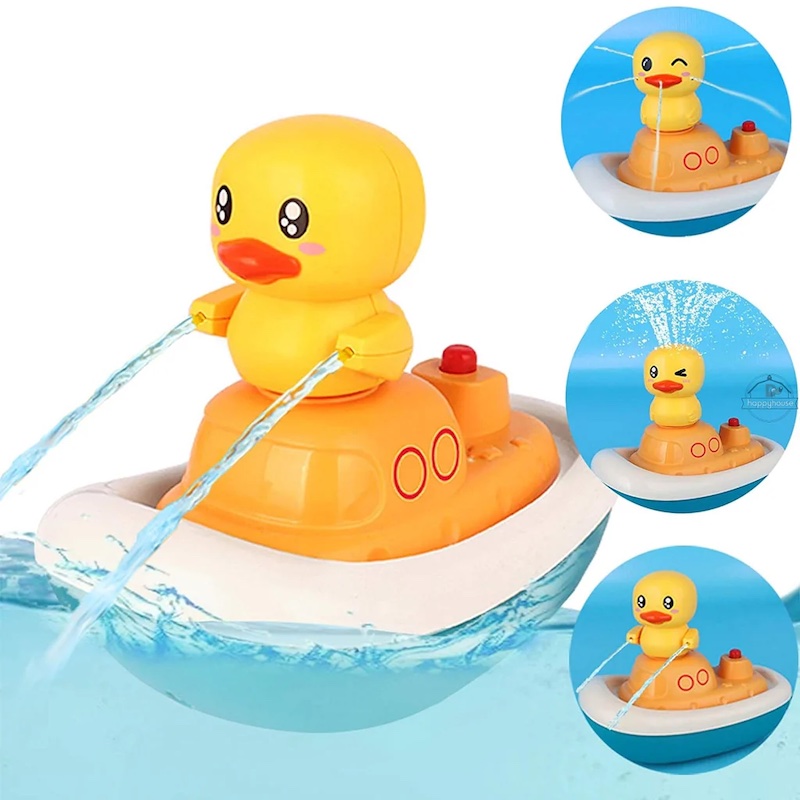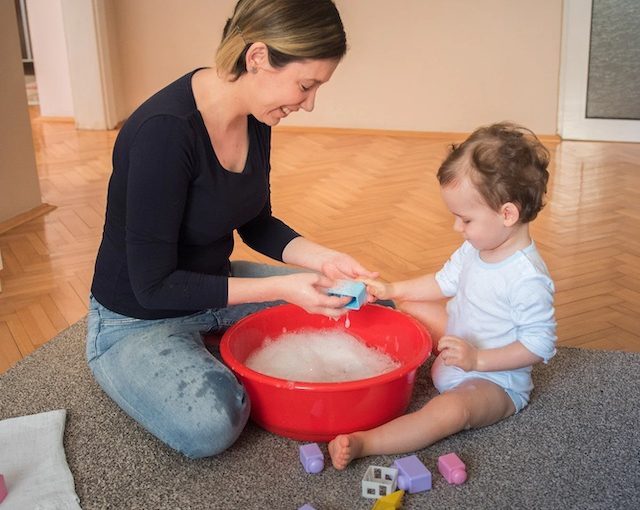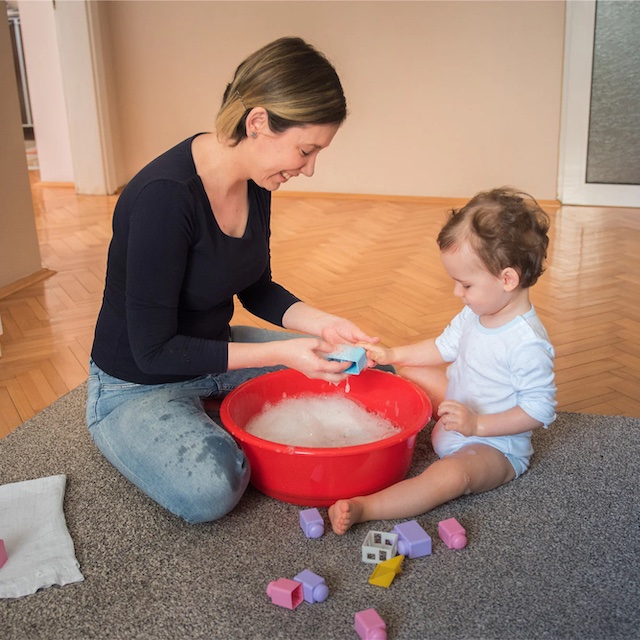Why Cleaning Bath Toys Is Essential
Maintaining the cleanliness of bath toys is not just about aesthetics; it’s a health matter. Dirty bath toys can become breeding grounds for harmful bacteria and mold. This can pose a health risk, especially for children with developing immune systems. Regular cleaning prevents the accumulation of grime and soap scum, which can attract germs. The best way to clean bath toys involves methods that are simple but effective. Keeping toys clean also prolongs their lifespan, ensuring that your child can safely enjoy their bath time favorites for longer. It’s important to incorporate bath toy cleaning into your routine for your child’s safety and for peace of mind. Clean toys contribute to a hygienic bathroom environment and overall household cleanliness. Now, let’s delve into how to recognize when your toys need that necessary scrub down.
Signs Your Bath Toys Need a Good Clean
Knowing the signs that your bath toys need cleaning is critical in maintaining a healthy play environment. Here are telltale indicators to look out for:
- Discoloration: Over time, toys may develop an off-color hue, a clear sign they require attention.
- Slimy Texture: If the toys feel slimy, this signifies the presence of biofilm, and they need a wash.
- Unpleasant Odor: A musty or foul smell emanating from toys indicates bacteria or mildew growth.
- Visible Dirt and Grime: Seeing dirt, grime, or soap scum means it’s time for a clean.
- Water Retention: Toys not draining properly tend to harbor unwanted germs inside.
As a busy parent, you’ll find these signs easy to spot during regular bath times. Acknowledge these red flags and incorporate the best way to clean bath toys as part of your routine. Remember, keeping toys clean not only ensures fun but safe play as well.
Simple Daily Rinse Techniques
Incorporating a daily rinse for bath toys is the best way to clean them effectively. Here are some simple techniques to make this habit quick and practical:
- Post-bath Rinse: After your child’s bath, take a minute to rinse each toy under warm running water. This action helps to remove any lingering soap, dirt, or oil.
- Shake and Squeeze: For toys that can hold water, give them a good shake and squeeze under the stream to flush out the inside.
- Use a Colander: Place small toys in a colander to rinse them all at once, saving time.
- Dry with a Towel: Quickly pat the toys dry with a clean towel to remove any leftover moisture.
These daily rinse techniques, when done consistently, can significantly reduce the need for frequent deep cleanings. By applying these simple steps, you ensure the toys are fresh and ready for the next bath time, without it becoming another time-consuming chore.
Deep Cleaning Methods for Weekly Maintenance
While daily rinses are great for keeping bath toys clean, a weekly deep clean is key. Here’s how to do it effectively and quickly.
- Soak in Vinegar Solution: Mix equal parts of white vinegar and warm water. Soak toys for about an hour. This removes stubborn grime and disinfects.
- Use a Toothbrush: Scrub toys with a toothbrush to get into those hard-to-reach areas. It’s perfect for removing any lingering dirt.
- Rinse Thoroughly: After scrubbing, make sure to rinse the toys well. Clear out any vinegar or cleaning agent used.
- Boil for Sterilization: For toys that can withstand heat, boiling them is a great option. It kills most germs and bacteria.
- Dishwasher Clean: Check if toys are dishwasher-safe. If they are, the hot water and detergent in a dishwasher can be effective for a thorough cleanse.
Stay consistent with these methods to ensure your bath toys remain in the best condition. Implementing the best way to clean bath toys on a weekly basis will keep harmful bacteria at bay. Plus, it allows your children to play safely during bath time.
Natural Cleaning Solutions for Bath Toys
When looking for the best way to clean bath toys, consider natural solutions. They are effective, safe, and often at hand. Here are several cleaning methods featuring natural substances:
- Use Baking Soda: Make a paste with baking soda and water. Apply it to the toys and rinse after a few minutes. This method combats mildew and leaves toys clean without harsh chemicals.
- Lemon Juice Rinses: Lemon juice is a natural disinfectant. Mix it with water to rinse toys, especially if they’ve begun to develop an odor. The citrus will eliminate smells and sanitize the toys.
- Tea Tree Oil Mix: Combine a few drops of tea tree oil with warm water. Soak the toys in this mixture to utilize its antifungal properties.
- Sunlight Exposure: Sunlight is a natural disinfectant. After cleaning, let the toys dry in direct sunlight. It helps kill lingering bacteria.
- Salt Water Soak: Salt has antibacterial properties. Dissolve a generous amount of salt in warm water and soak the toys. After an hour, rinse them off.
Each of these solutions presents a non-toxic, eco-friendly way to keep your child’s bath toys in pristine condition. They are easy to use and typically require items you already have at home. Remember, employing the best way to clean bath toys not only promotes safety but also plays a part in a sustainable lifestyle.
Tackling Mold and Mildew Problems
When mold and mildew strike, the best way to clean bath toys needs to be ramped up. Mold and mildew are not only unsightly but can also cause health issues if not dealt with promptly. Here is a step-by-step guide to tackle these problems effectively:
- Spot Check Regularly: Keep an eye on toys for any black or green spots. These are signs of mold growth.
- Immediate Action: Once you spot mold, act fast. The longer it sits, the harder it is to clean.
- Bleach Solution: For a strong clean, mix a small amount of bleach with water. Soak toys thoroughly. Rinse well after.
- Seal Holes: If toys have holes, seal them with a hot glue gun or silicone. This stops water from getting inside.
- Avoid Stagnant Water: Empty all water from toys after bath time to prevent mold.
- Air Circulation is Key: After cleaning, allow toys to air dry completely. Good airflow helps to prevent mold growth.
In conclusion, tackling mold requires vigilance and swift action. Employ these steps and combine them with regular daily and weekly cleaning routines to keep bath toys safe and sanitary.
Drying and Storage Tips to Keep Toys Clean Longer
Ensuring bath toys are thoroughly dried and properly stored is critical for their longevity and hygiene. Here’s a straightforward approach to drying and storage that will help keep those bath time companions fresh:
- Pat Dry Immediately: After cleaning, don’t let toys sit. Pat them dry with a towel right away.
- Use a Mesh Bag: Hang a mesh bag in the shower. It allows toys to air dry quickly.
- Consider a Toy Net: Install a toy net or hammock. It keeps toys elevated and promotes air flow.
- Avoid Closed Containers: Don’t store wet toys in closed containers. It invites mold and mildew.
- Designate a Drying Area: Set aside a well-ventilated space for toys to fully air out.
- Check for Leftover Moisture: Before putting toys away, ensure no water is trapped inside.
By applying these drying and storage strategies, you add an extra layer of protection against dirt and germs. The best way to clean bath toys includes caring for them even when they are not in use. Simple acts like drying and proper storage will extend the life of the toys and maintain a clean, safe environment for your little ones to enjoy.
Choosing Easy-to-Clean Bath Toys for Future Purchases
When selecting new bath toys, the best way to clean bath toys starts with prevention. Choose toys that are simple to maintain and less likely to harbor bacteria and mold. Here are some tips:
- Opt for Solid Toys: Avoid toys with small openings or hard-to-reach places. Toys made from one solid piece are easier to clean.
- Choose Mold-Resistant Materials: Look for toys specifically designed to resist mold growth. Rubber and silicone are good options.
- Check for ‘Dishwasher-Safe’ Labels: Some toys can go right into the dishwasher, making cleaning a breeze.
- Select Toys with Drainage Holes: If you choose toys with holes, ensure they’re large enough to clean inside easily.
- Avoid Toys with Fabric Parts: Fabric can retain moisture and is difficult to dry fully. Stick to plastic or rubber toys.
- Go for Quality Over Quantity: Fewer, higher-quality toys are easier to manage than a large number of cheap ones.
- Read Reviews: Other parents’ experiences can guide you to toys that are durable and easy to keep clean.
Investing in easy-to-clean bath toys can save you time and ensure your child’s bath time is both fun and hygienic. The best way to clean bath toys is by not having to clean as much in the first place!
